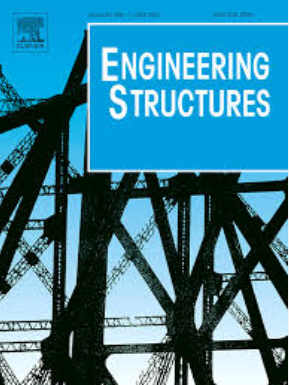Enhancing failure mode classification of RC beam-column joints using logistic regression and hybrid sampling strategy
IF 5.6
1区 工程技术
Q1 ENGINEERING, CIVIL
引用次数: 0
Abstract
Seismic failure mode of reinforced concrete (RC) beam-column joints (BCJs) is crucial for the safety and integrity of RC building or structure withstanding seismic forces. However, traditional classification methods are biased towards estimating majority samples and often misclassify minority samples due to imbalanced data distributions, leading to unexpected classifications for seismic failure modes of BCJs. To address the challenge of imbalanced data in classifying seismic failure modes of BCJs, an innovative imbalanced classification method based on logistic regression (LR) and hybrid sampling strategy is proposed. The method was compared with traditional shear-resistance design methods and LR models based on 197 sets of experimental data. Results demonstrate that the proposed method consistently outperforms traditional approaches. Specifically, the proposed method maintains higher values for Ka and Mcc, even as the class imbalance ratio increases, indicating its robustness in handling imbalanced data. The proposed imbalanced classification method offers several advantages over traditional approaches and a promising tool for accurately classifying seismic failure modes of BCJs, even in the presence of imbalanced data.
求助全文
约1分钟内获得全文
求助全文
来源期刊

Engineering Structures
工程技术-工程:土木
CiteScore
10.20
自引率
14.50%
发文量
1385
审稿时长
67 days
期刊介绍:
Engineering Structures provides a forum for a broad blend of scientific and technical papers to reflect the evolving needs of the structural engineering and structural mechanics communities. Particularly welcome are contributions dealing with applications of structural engineering and mechanics principles in all areas of technology. The journal aspires to a broad and integrated coverage of the effects of dynamic loadings and of the modelling techniques whereby the structural response to these loadings may be computed.
The scope of Engineering Structures encompasses, but is not restricted to, the following areas: infrastructure engineering; earthquake engineering; structure-fluid-soil interaction; wind engineering; fire engineering; blast engineering; structural reliability/stability; life assessment/integrity; structural health monitoring; multi-hazard engineering; structural dynamics; optimization; expert systems; experimental modelling; performance-based design; multiscale analysis; value engineering.
Topics of interest include: tall buildings; innovative structures; environmentally responsive structures; bridges; stadiums; commercial and public buildings; transmission towers; television and telecommunication masts; foldable structures; cooling towers; plates and shells; suspension structures; protective structures; smart structures; nuclear reactors; dams; pressure vessels; pipelines; tunnels.
Engineering Structures also publishes review articles, short communications and discussions, book reviews, and a diary on international events related to any aspect of structural engineering.
 求助内容:
求助内容: 应助结果提醒方式:
应助结果提醒方式:


